What’s in a name?
We are proud to be named after No 295 Squadron RAF, this was an airborne forces and transport squadron of the Royal Air Force during World War II. It was the first unit to be equipped with the Armstrong Whitworth Albemarle transport and glider tug aircraft.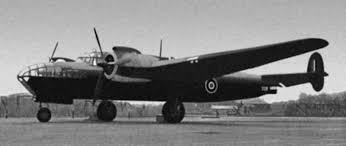 No. 295 Squadron was formed on 3 August 1942 at RAF Netheravon as an airborne forces unit, equipped with Whitley Mk.Vs., which were from November 1942 used in leaflet dropping missions over France, supplemented in February 1943 with Halifax Mk.Vs, which they used in supply mission to North Africa that took place between March and August 1943, during the Second World War. The mission was undertaken by No. 2 Wing, Glider Pilot Regiment and No. 295 Squadron Royal Air Force, prior to the Allied invasion of Sicily. Unusually, the mission was known by different names in different branches of the British Armed Forces: the British Army called the operation "Turkey Buzzard", while in the Royal Air Force it was known as "Beggar". The mission involved Royal Air Force Handley Page Halifax bombers towing Airspeed Horsa gliders 3,200 miles (5,100 km) from England to Tunisia. The British Horsas were needed to complement the smaller American Waco gliders, which did not have the capacity required for the operations planned by the 1st Airborne Division.
During the mission one Halifax-and-Horsa combination was shot down by German Focke Wulf Condor long-range patrol aircraft. Altogether five Horsas and three Halifaxes were lost, but twenty-seven Horsas arrived in Tunisia in time to participate in the invasion of Sicily. Although this supply operation was a success, few of the gliders made it to their landing zones in Sicily during the two British airborne operations that followed, many becoming casualties of the weather conditions or anti-aircraft gunfire.
No. 295 Squadron was formed on 3 August 1942 at RAF Netheravon as an airborne forces unit, equipped with Whitley Mk.Vs., which were from November 1942 used in leaflet dropping missions over France, supplemented in February 1943 with Halifax Mk.Vs, which they used in supply mission to North Africa that took place between March and August 1943, during the Second World War. The mission was undertaken by No. 2 Wing, Glider Pilot Regiment and No. 295 Squadron Royal Air Force, prior to the Allied invasion of Sicily. Unusually, the mission was known by different names in different branches of the British Armed Forces: the British Army called the operation "Turkey Buzzard", while in the Royal Air Force it was known as "Beggar". The mission involved Royal Air Force Handley Page Halifax bombers towing Airspeed Horsa gliders 3,200 miles (5,100 km) from England to Tunisia. The British Horsas were needed to complement the smaller American Waco gliders, which did not have the capacity required for the operations planned by the 1st Airborne Division.
During the mission one Halifax-and-Horsa combination was shot down by German Focke Wulf Condor long-range patrol aircraft. Altogether five Horsas and three Halifaxes were lost, but twenty-seven Horsas arrived in Tunisia in time to participate in the invasion of Sicily. Although this supply operation was a success, few of the gliders made it to their landing zones in Sicily during the two British airborne operations that followed, many becoming casualties of the weather conditions or anti-aircraft gunfire.
By October 1943 the squadron converted to the Albemarle Mk.I. With these aircraft the squadron shared – with 570 Sqn.- the honour of being the first to drop troops over Normandy on the eve of D-Day, while other aircraft of the squadron towed gliders to the landing zones.
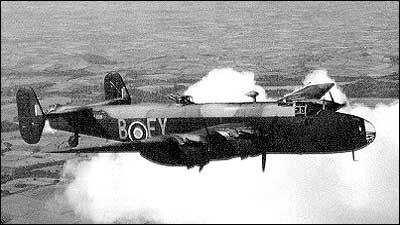 The Albemarles gave way in July 1944 to the Stirling Mk.IV. The squadron used these aircraft during the Battle of Arnhem during Operation Market Garden, again towing gliders. The operation was an unsuccessful Allied military operation, fought in the Netherlands and Germany in the Second World War. Airborne and land forces succeeded in the liberation of the Dutch cities of Eindhoven and Nijmegen, but failed in keeping their further positions in and around the city of Arnhem with its strategically important bridge over the river Rhine.
The Albemarles gave way in July 1944 to the Stirling Mk.IV. The squadron used these aircraft during the Battle of Arnhem during Operation Market Garden, again towing gliders. The operation was an unsuccessful Allied military operation, fought in the Netherlands and Germany in the Second World War. Airborne and land forces succeeded in the liberation of the Dutch cities of Eindhoven and Nijmegen, but failed in keeping their further positions in and around the city of Arnhem with its strategically important bridge over the river Rhine.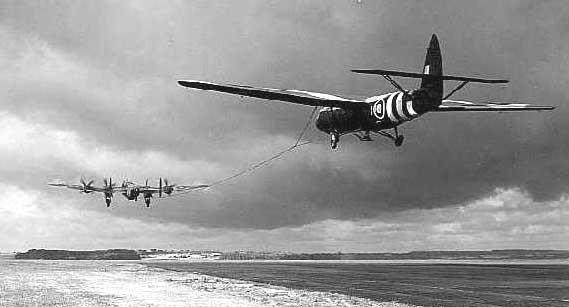
The operation was split into two sub-operations:
Market – the airborne forces, the First Allied Airborne Army, who would seize bridges
Garden – the ground forces, consisting of the British XXX Corps
Market would be the largest airborne operation in history, delivering over 34,600 men of the 101st, 82nd and 1st Airborne Divisions and the Polish Brigade. 14,589 troops were landed by glider and 20,011 by parachute. Gliders also brought in 1,736 vehicles and 263 artillery pieces. 3,342 tons of ammunition and other supplies were brought by glider and parachute drop.
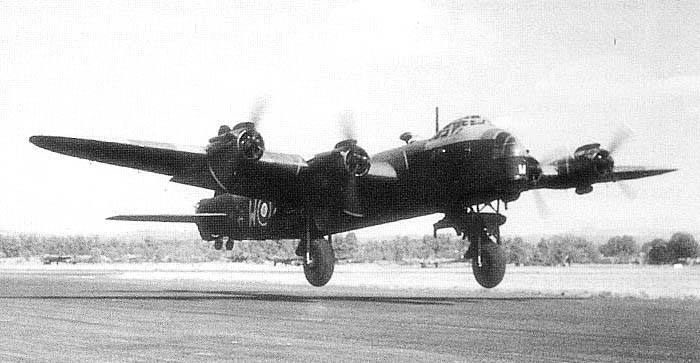
In early October 1944, Stirlings of the RAF's No 295 Squadron took up residence at RAF Rivenhall, with most of its operations consisting of supply drops to Norwegian resistance forces and similar activities over the Netherlands and Denmark. The last assault action with the Stirlings was on 24 March 1945, when the unit took part in Operation Varsity, a successful airborne forces operation launched by Allied troops that took place toward the end of World War II. Involving more than 16,000 paratroopers and several thousand aircraft, it was the largest airborne operation in history to be conducted on a single day and in one location. The Stirlings further provided service carrying troops to Norway to disarm the Germans there when the war was over. The squadron was disbanded at Rivenhall on 21 January 1946,whereupon the station was held on a care and maintenance basis.
What’s in a place?
The connection with Rivenhall is just a strong, Opened in 1942, it was used by both the Royal Air Force and United States Army Air Force. During the war it was used primarily as a combat airfield with various fighter and bomber units. After the war it was closed in 1946 and kept in reserve until 1956.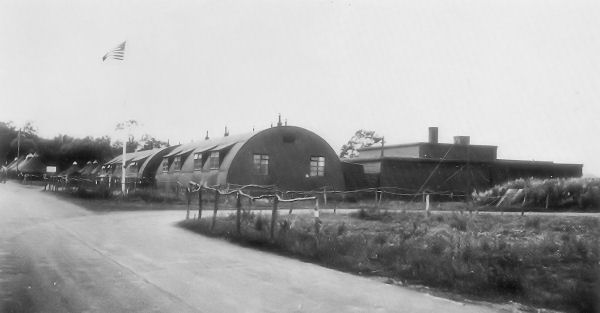
Rivenhall was known as USAAF Station AAF-168 for security reasons by the USAAF during the war, and by which it was referred to instead of location. It's USAAF Station Code was "RL" The airfield was built to the Class A airfield standard consisting of three runways of 6,000 ft (10/28), 4,200 ft (04/22), and 4,200 ft (16/34). 51 "Loop" type hardstands were constructed connecting to an enclosing perimeter track, of a standard width of 50 feet. The ground support station was constructed largely of Nissen huts of various sizes mostly on the south side of the airfield. The support station was where the group and ground station commanders and squadron headquarters and orderly rooms were located. Also on the ground station were where the mess facilities; chapel; hospital; mission briefing and debriefing; armory and bombsite storage; life support; parachute rigging; supply warehouses; station and airfield security; motor pool and the other ground support functions necessary to support the air operations of the group. These facilities were all connected by a network of single path support roads.
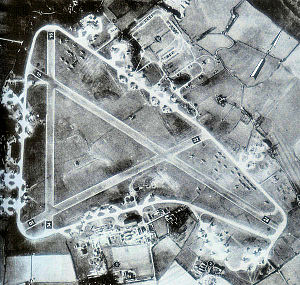
The technical site, also on the south side of the airfield, was connected to the ground station and airfield consisted of at least two T-2 type hangars and various organizational, component and field maintenance shops along with the crew chiefs and other personnel necessary to keep the aircraft airworthy and to quickly repair light and moderate battle damage. Aircraft severely damaged in combat were sent to repair depots for major structural repair. The Ammunition dump was located on the north side of the airfield, outside of the perimeter track surrounded by large dirt mounds and concrete storage pens for storing the aerial bombs and the other munitions required by the combat aircraft. Various domestic accommodation sites were constructed dispersed away from the airfield on the south side, but within a mile or so of the technical support site, also using clusters of Maycrete or Nissen huts. The Huts were either connected, set up end-to-end or built singly and made of prefabricated corrugated iron with a door and two small windows at the front and back. They provided accommodation for 2,594 personnel, including communal and a sick quarters.
295 was the last active unit at RAF Rivenhall, to learn more or help see the RAF / USAAF Rivenhall facebook page.